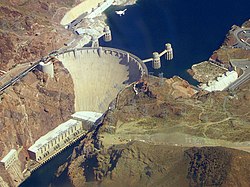Engineering
| Engineering |
|---|


Engineering is the use of scientific principles to design and build machines, structures, and other items, including bridges, tunnels, roads, vehicles, and buildings.[1] The discipline of engineering encompasses a broad range of more specialized fields of engineering, each with a more specific emphasis on particular areas of applied mathematics, applied science, and types of application. See glossary of engineering.
The term engineering is derived from the Latin ingenium, meaning "cleverness" and ingeniare, meaning "to contrive, devise".[2]
Definition
The American Engineers' Council for Professional Development (ECPD, the predecessor of ABET)[3] has defined "engineering" as:
The creative application of scientific principles to design or develop structures, machines, apparatus, or manufacturing processes, or works utilizing them singly or in combination; or to construct or operate the same with full cognizance of their design; or to forecast their behavior under specific operating conditions; all as respects an intended function, economics of operation and safety to life and property.[4][5]
History
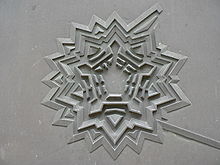
Engineering has existed since ancient times, when humans devised inventions such as the wedge, lever, wheel and pulley, etc.
The term engineering is derived from the word engineer, which itself dates back to the 14th century when an engine'er (literally, one who builds or operates a siege engine) referred to "a constructor of military engines."[6] In this context, now obsolete, an "engine" referred to a military machine, i.e., a mechanical contraption used in war (for example, a catapult). Notable examples of the obsolete usage which have survived to the present day are military engineering corps, e.g., the U.S. Army Corps of Engineers.
The word "engine" itself is of even older origin, ultimately deriving from the Latin ingenium (c. 1250), meaning "innate quality, especially mental power, hence a clever invention."[7]
Later, as the design of civilian structures, such as bridges and buildings, matured as a technical discipline, the term civil engineering[5] entered the lexicon as a way to distinguish between those specializing in the construction of such non-military projects and those involved in the discipline of military engineering.
Ancient era

The pyramids in ancient Egypt, ziggurats of Mesopotamia, the Acropolis and Parthenon in Greece, the Roman aqueducts, Via Appia and Colosseum, Teotihuacán, and the Brihadeeswarar Temple of Thanjavur, among many others, stand as a testament to the ingenuity and skill of ancient civil and military engineers. Other monuments, no longer standing, such as the Hanging Gardens of Babylon and the Pharos of Alexandria, were important engineering achievements of their time and were considered among the Seven Wonders of the Ancient World.
The six classic simple machines were known in the ancient Near East. The wedge and the inclined plane (ramp) were known since prehistoric times.[8] The wheel, along with the wheel and axle mechanism, was invented in Mesopotamia (modern Iraq) during the 5th millennium BC.[9] The lever mechanism first appeared around 5,000 years ago in the Near East, where it was used in a simple balance scale,[10] and to move large objects in ancient Egyptian technology.[11] The lever was also used in the shadoof water-lifting device, the first crane machine, which appeared in Mesopotamia circa 3000 BC,[10] and then in ancient Egyptian technology circa 2000 BC.[12] The earliest evidence of pulleys date back to Mesopotamia in the early 2nd millennium BC,[13] and ancient Egypt during the Twelfth Dynasty (1991-1802 BC).[14] The screw, the last of the simple machines to be invented,[15] first appeared in Mesopotamia during the Neo-Assyrian period (911-609) BC.[16] The Egyptian pyramids were built using three of the six simple machines, the inclined plane, the wedge, and the lever, to create structures like the Great Pyramid of Giza.[17]
The earliest civil engineer known by name is Imhotep.[5] As one of the officials of the Pharaoh, Djosèr, he probably designed and supervised the construction of the Pyramid of Djoser (the Step Pyramid) at Saqqara in Egypt around 2630–2611 BC.[18] The earliest practical water-powered machines, the water wheel and watermill, first appeared in the Persian Empire, in what are now Iraq and Iran, by the early 4th century BC.[19]
Ancient Greece developed machines in both civilian and military domains. The Antikythera mechanism, an early known mechanical analog computer,[20][21] and the mechanical inventions of Archimedes, are examples of Greek mechanical engineering. Some of Archimedes' inventions as well as the Antikythera mechanism required sophisticated knowledge of differential gearing or epicyclic gearing, two key principles in machine theory that helped design the gear trains of the Industrial Revolution, and are still widely used today in diverse fields such as robotics and automotive engineering.[22]
Ancient Chinese, Greek, Roman and Hunnic armies employed military machines and inventions such as artillery which was developed by the Greeks around the 4th century BC,[23] the trireme, the ballista and the catapult. In the Middle Ages, the trebuchet was developed.
Middle Ages
The earliest practical wind-powered machines, the windmill and wind pump, first appeared in the Muslim world during the Islamic Golden Age, in what are now Iran, Afghanistan, and Pakistan, by the 9th century AD.[24][25][26][27] The earliest practical steam-powered machine was a steam jack driven by a steam turbine, described in 1551 by Taqi al-Din Muhammad ibn Ma'ruf in Ottoman Egypt.[28][29]
The cotton gin was invented in India by the 6th century AD,[30] and the spinning wheel was invented in the Islamic world by the early 11th century,[31] both of which were fundamental to the growth of the cotton industry. The spinning wheel was also a precursor to the spinning jenny, which was a key development during the early Industrial Revolution in the 18th century.[32] The crankshaft and camshaft were invented by Al-Jazari in Northern Mesopotamia circa 1206,[33][34][35] and they later became central to modern machinery such as the steam engine, internal combustion engine and automatic controls.[36]
The earliest programmable machines were developed in the Muslim world. A music sequencer, a programmable musical instrument, was the earliest type of programmable machine. The first music sequencer was an automated flute player invented by the Banu Musa brothers, described in their Book of Ingenious Devices, in the 9th century.[37][38] In 1206, Al-Jazari invented programmable automata/robots. He described four automaton musicians, including drummers operated by a programmable drum machine, where they could be made to play different rhythms and different drum patterns.[39] The castle clock, a hydropowered mechanical astronomical clock invented by Al-Jazari, was the first programmable analog computer.[40][41][42]

Before the development of modern engineering, mathematics was used by artisans and craftsmen, such as millwrights, clockmakers, instrument makers and surveyors. Aside from these professions, universities were not believed to have had much practical significance to technology.[43]:32
A standard reference for the state of mechanical arts during the Renaissance is given in the mining engineering treatise De re metallica (1556), which also contains sections on geology, mining, and chemistry. De re metallica was the standard chemistry reference for the next 180 years.[43]
Modern era
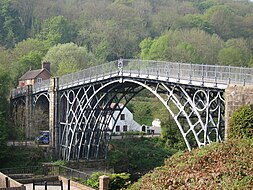
The science of classical mechanics, sometimes called Newtonian mechanics, formed the scientific basis of much of modern engineering.[43] With the rise of engineering as a profession in the 18th century, the term became more narrowly applied to fields in which mathematics and science were applied to these ends. Similarly, in addition to military and civil engineering, the fields then known as the mechanic arts became incorporated into engineering.
Canal building was an important engineering work during the early phases of the Industrial Revolution.[44]
John Smeaton was the first self-proclaimed civil engineer and is often regarded as the "father" of civil engineering. He was an English civil engineer responsible for the design of bridges, canals, harbors, and lighthouses. He was also a capable mechanical engineer and an eminent physicist. Using a model water wheel, Smeaton conducted experiments for seven years, determining ways to increase efficiency.[45]:127 Smeaton introduced iron axles and gears to water wheels.[43]:69 Smeaton also made mechanical improvements to the Newcomen steam engine. Smeaton designed the third Eddystone Lighthouse (1755–59) where he pioneered the use of 'hydraulic lime' (a form of mortar which will set under water) and developed a technique involving dovetailed blocks of granite in the building of the lighthouse. He is important in the history, rediscovery of, and development of modern cement, because he identified the compositional requirements needed to obtain "hydraulicity" in lime; work which led ultimately to the invention of Portland cement.
Applied science lead to the development of the steam engine. The sequence of events began with the invention the barometer and the measurement of atmospheric pressure by Evangelista Torricelli in 1643, demonstration of the force of atmospheric pressure by Otto von Guericke using the Magdeburg hemispheres in 1656, laboratory experiments by Denis Papin, who built experimental model steam engines and demonstrated the use of a piston, which he published in 1707. Edward Somerset, 2nd Marquess of Worcester published a book of 100 inventions containing a method for raising waters similar to a coffee percolator. Samuel Morland, a mathematician and inventor who worked on pumps, left notes at the Vauxhall Ordinance Office on a steam pump design that Thomas Savery read. In 1698 Savery built a steam pump called "The Miner's Friend." It employed both vacuum and pressure.[46] Iron merchant Thomas Newcomen, who built the first commercial piston steam engine in 1712, was not known to have any scientific training.[45]:32
The application of steam-powered cast iron blowing cylinders for providing pressurized air for blast furnaces lead to a large increase in iron production in the late 18th century. The higher furnace temperatures made possible with steam-powered blast allowed for the use of more lime in blast furnaces, which enabled the transition from charcoal to coke.[47] These innovations lowered the cost of iron, making horse railways and iron bridges practical. The puddling process, patented by Henry Cort in 1784 produced large scale quantities of wrought iron. Hot blast, patented by James Beaumont Neilson in 1828, greatly lowered the amount of fuel needed to smelt iron. With the development of the high pressure steam engine, the power to weight ratio of steam engines made practical steamboats and locomotives possible.[48] New steel making processes, such as the Bessemer process and the open hearth furnace, ushered in an area of heavy engineering in the late 19th century.
One of the most famous engineers of the mid 19th century was Isambard Kingdom Brunel, who built railroads, dockyards and steamships.
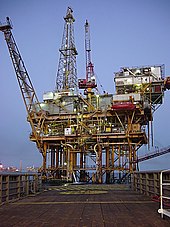
The Industrial Revolution created a demand for machinery with metal parts, which led to the development of several machine tools. Boring cast iron cylinders with precision was not possible until John Wilkinson invented his boring machine, which is considered the first machine tool.[49] Other machine tools included the screw cutting lathe, milling machine, turret lathe and the metal planer. Precision machining techniques were developed in the first half of the 19th century. These included the use of gigs to guide the machining tool over the work and fixtures to hold the work in the proper position. Machine tools and machining techniques capable of producing interchangeable parts lead to large scale factory production by the late 19th century.[50]
The United States census of 1850 listed the occupation of "engineer" for the first time with a count of 2,000.[51] There were fewer than 50 engineering graduates in the U.S. before 1865. In 1870 there were a dozen U.S. mechanical engineering graduates, with that number increasing to 43 per year in 1875. In 1890, there were 6,000 engineers in civil, mining, mechanical and electrical.[52]
There was no chair of applied mechanism and applied mechanics at Cambridge until 1875, and no chair of engineering at Oxford until 1907. Germany established technical universities earlier.[53]
The foundations of electrical engineering in the 1800s included the experiments of Alessandro Volta, Michael Faraday, Georg Ohm and others and the invention of the electric telegraph in 1816 and the electric motor in 1872. The theoretical work of James Maxwell (see: Maxwell's equations) and Heinrich Hertz in the late 19th century gave rise to the field of electronics. The later inventions of the vacuum tube and the transistor further accelerated the development of electronics to such an extent that electrical and electronics engineers currently outnumber their colleagues of any other engineering specialty.[5] Chemical engineering developed in the late nineteenth century.[5] Industrial scale manufacturing demanded new materials and new processes and by 1880 the need for large scale production of chemicals was such that a new industry was created, dedicated to the development and large scale manufacturing of chemicals in new industrial plants.[5] The role of the chemical engineer was the design of these chemical plants and processes.[5]

Aeronautical engineering deals with aircraft design process design while aerospace engineering is a more modern term that expands the reach of the discipline by including spacecraft design. Its origins can be traced back to the aviation pioneers around the start of the 20th century although the work of Sir George Cayley has recently been dated as being from the last decade of the 18th century. Early knowledge of aeronautical engineering was largely empirical with some concepts and skills imported from other branches of engineering.[54]
The first PhD in engineering (technically, applied science and engineering) awarded in the United States went to Josiah Willard Gibbs at Yale University in 1863; it was also the second PhD awarded in science in the U.S.[55]
Only a decade after the successful flights by the Wright brothers, there was extensive development of aeronautical engineering through development of military aircraft that were used in World War I. Meanwhile, research to provide fundamental background science continued by combining theoretical physics with experiments.
Main branches of engineering
Engineering is a broad discipline that is often broken down into several sub-disciplines. Although an engineer will usually be trained in a specific discipline, he or she may become multi-disciplined through experience. Engineering is often characterized as having four main branches:[56][57][58] chemical engineering, civil engineering, electrical engineering, and mechanical engineering.
Chemical engineering
Chemical engineering is the application of physics, chemistry, biology, and engineering principles in order to carry out chemical processes on a commercial scale, such as the manufacture of commodity chemicals, specialty chemicals, petroleum refining, microfabrication, fermentation, and biomolecule production.
Civil engineering
Civil engineering is the design and construction of public and private works, such as infrastructure (airports, roads, railways, water supply, and treatment etc.), bridges, tunnels, dams, and buildings.[59][60] Civil engineering is traditionally broken into a number of sub-disciplines, including structural engineering, environmental engineering, and surveying. It is traditionally considered to be separate from military engineering.[61]
Computer engineering
Computer engineering (CE) is a branch of engineering that integrates several fields of computer science and electronic engineering required to develop computer hardware and software. Computer engineers usually have training in electronic engineering (or electrical engineering), software design, and hardware-software integration instead of only software engineering or electronic engineering.
Electrical engineering
Electrical engineering is the design, study, and manufacture of various electrical and electronic systems, such as broadcast engineering, electrical circuits, generators, motors, electromagnetic/electromechanical devices, electronic devices, electronic circuits, optical fibers, optoelectronic devices, computer systems, telecommunications, instrumentation, control systems, and electronics.
Mechanical engineering
Mechanical engineering is the design and manufacture of physical or mechanical systems, such as power and energy systems, aerospace/aircraft products, weapon systems, transportation products, engines, compressors, powertrains, kinematic chains, vacuum technology, vibration isolation equipment, manufacturing, robotics, turbines, audio equipments, and mechatronics.
Interdisciplinary engineering
Interdisciplinary engineering draws from more than one of the principle branches of the practice. Historically, naval engineering and mining engineering were major branches. Other engineering fields are manufacturing engineering, acoustical engineering, corrosion engineering, instrumentation and control, aerospace, automotive, computer, electronic, information engineering, petroleum, environmental, systems, audio, software, architectural, agricultural, biosystems, biomedical,[62] geological, textile, industrial, materials,[63] and nuclear engineering.[64] These and other branches of engineering are represented in the 36 licensed member institutions of the UK Engineering Council.
New specialties sometimes combine with the traditional fields and form new branches – for example, Earth systems engineering and management involves a wide range of subject areas including engineering studies, environmental science, engineering ethics and philosophy of engineering.
Other branches of engineering
Aerospace engineering
Aerospace engineering studies design, manufacture aircraft, satellites, rockets, helicopters, and so on. It closely studies the pressure difference and aerodynamics of a vehicle to ensure safety and efficiency. Since most of the studies are related to fluids, it is applied to any moving vehicle, such as cars.
Marine engineering
Marine engineering is associated with anything on or near the ocean. Examples are, but not limited to, ships, submarines, oil rigs, structure, watercraft propulsion, on-board design and development, plants, harbors, and so on. It requires a combined knowledge in mechanical engineering, electrical engineering, civil engineering,and some programming abilities.
Practice
One who practices engineering is called an engineer, and those licensed to do so may have more formal designations such as Professional Engineer, Chartered Engineer, Incorporated Engineer, Ingenieur, European Engineer, or Designated Engineering Representative.
Methodology
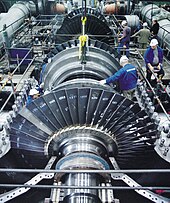
In the engineering design process, engineers apply mathematics and sciences such as physics to find novel solutions to problems or to improve existing solutions. Engineers need proficient knowledge of relevant sciences for their design projects. As a result, many engineers continue to learn new material throughout their career.
If multiple solutions exist, engineers weigh each design choice based on their merit and choose the solution that best matches the requirements. The task of the engineer is to identify, understand, and interpret the constraints on a design in order to yield a successful result. It is generally insufficient to build a technically successful product, rather, it must also meet further requirements.
Constraints may include available resources, physical, imaginative or technical limitations, flexibility for future modifications and additions, and other factors, such as requirements for cost, safety, marketability, productivity, and serviceability. By understanding the constraints, engineers derive specifications for the limits within which a viable object or system may be produced and operated.
Problem solving

Engineers use their knowledge of science, mathematics, logic, economics, and appropriate experience or tacit knowledge to find suitable solutions to a problem. Creating an appropriate mathematical model of a problem often allows them to analyze it (sometimes definitively), and to test potential solutions.[65]
Usually, multiple reasonable solutions exist, so engineers must evaluate the different design choices on their merits and choose the solution that best meets their requirements. Genrich Altshuller, after gathering statistics on a large number of patents, suggested that compromises are at the heart of "low-level" engineering designs, while at a higher level the best design is one which eliminates the core contradiction causing the problem.[66]
Engineers typically attempt to predict how well their designs will perform to their specifications prior to full-scale production. They use, among other things: prototypes, scale models, simulations, destructive tests, nondestructive tests, and stress tests. Testing ensures that products will perform as expected.[67]
Engineers take on the responsibility of producing designs that will perform as well as expected and will not cause unintended harm to the public at large. Engineers typically include a factor of safety in their designs to reduce the risk of unexpected failure.
The study of failed products is known as forensic engineering and can help the product designer in evaluating his or her design in the light of real conditions. The discipline is of greatest value after disasters, such as bridge collapses, when careful analysis is needed to establish the cause or causes of the failure.[68]
Computer use
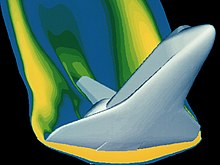
As with all modern scientific and technological endeavors, computers and software play an increasingly important role. As well as the typical business application software there are a number of computer aided applications (computer-aided technologies) specifically for engineering. Computers can be used to generate models of fundamental physical processes, which can be solved using numerical methods.

One of the most widely used design tools in the profession is computer-aided design (CAD) software. It enables engineers to create 3D models, 2D drawings, and schematics of their designs. CAD together with digital mockup (DMU) and CAE software such as finite element method analysis or analytic element method allows engineers to create models of designs that can be analyzed without having to make expensive and time-consuming physical prototypes.
These allow products and components to be checked for flaws; assess fit and assembly; study ergonomics; and to analyze static and dynamic characteristics of systems such as stresses, temperatures, electromagnetic emissions, electrical currents and voltages, digital logic levels, fluid flows, and kinematics. Access and distribution of all this information is generally organized with the use of product data management software.[69]
There are also many tools to support specific engineering tasks such as computer-aided manufacturing (CAM) software to generate CNC machining instructions; manufacturing process management software for production engineering; EDA for printed circuit board (PCB) and circuit schematics for electronic engineers; MRO applications for maintenance management; and Architecture, engineering and construction (AEC) software for civil engineering.
In recent years the use of computer software to aid the development of goods has collectively come to be known as product lifecycle management (PLM).[70]
Social context
This section possibly contains original research. (July 2010) (Learn how and when to remove this template message) |
The engineering profession engages in a wide range of activities, from large collaboration at the societal level, and also smaller individual projects. Almost all engineering projects are obligated to some sort of financing agency: a company, a set of investors, or a government. The few types of engineering that are minimally constrained by such issues are pro bono engineering and open-design engineering.
By its very nature engineering has interconnections with society, culture and human behavior. Every product or construction used by modern society is influenced by engineering. The results of engineering activity influence changes to the environment, society and economies, and its application brings with it a responsibility and public safety.
Engineering projects can be subject to controversy. Examples from different engineering disciplines include the development of nuclear weapons, the Three Gorges Dam, the design and use of sport utility vehicles and the extraction of oil. In response, some western engineering companies have enacted serious corporate and social responsibility policies.
Engineering is a key driver of innovation and human development. Sub-Saharan Africa, in particular, has a very small engineering capacity which results in many African nations being unable to develop crucial infrastructure without outside aid.[citation needed] The attainment of many of the Millennium Development Goals requires the achievement of sufficient engineering capacity to develop infrastructure and sustainable technological development.[71]

All overseas development and relief NGOs make considerable use of engineers to apply solutions in disaster and development scenarios. A number of charitable organizations aim to use engineering directly for the good of mankind:
- Engineers Without Borders
- Engineers Against Poverty
- Registered Engineers for Disaster Relief
- Engineers for a Sustainable World
- Engineering for Change
- Engineering Ministries International[72]
Engineering companies in many established economies are facing significant challenges with regard to the number of professional engineers being trained, compared with the number retiring. This problem is very prominent in the UK where engineering has a poor image and low status.[73] There are many negative economic and political issues that this can cause, as well as ethical issues.[74] It is widely agreed that the engineering profession faces an "image crisis",[75] rather than it being fundamentally an unattractive career. Much work is needed to avoid huge problems in the UK and other western economies.
Code of ethics
Many engineering societies have established codes of practice and codes of ethics to guide members and inform the public at large. The National Society of Professional Engineers code of ethics states:
Engineering is an important and learned profession. As members of this profession, engineers are expected to exhibit the highest standards of honesty and integrity. Engineering has a direct and vital impact on the quality of life for all people. Accordingly, the services provided by engineers require honesty, impartiality, fairness, and equity, and must be dedicated to the protection of the public health, safety, and welfare. Engineers must perform under a standard of professional behavior that requires adherence to the highest principles of ethical conduct.[76]
In Canada, many engineers wear the Iron Ring as a symbol and reminder of the obligations and ethics associated with their profession.[77]
Relationships with other disciplines
Science
Scientists study the world as it is; engineers create the world that has never been.

There exists an overlap between the sciences and engineering practice; in engineering, one applies science. Both areas of endeavor rely on accurate observation of materials and phenomena. Both use mathematics and classification criteria to analyze and communicate observations.[citation needed]
Scientists may also have to complete engineering tasks, such as designing experimental apparatus or building prototypes. Conversely, in the process of developing technology engineers sometimes find themselves exploring new phenomena, thus becoming, for the moment, scientists or more precisely "engineering scientists".[citation needed]
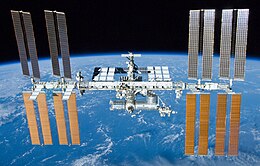
In the book What Engineers Know and How They Know It,[81] Walter Vincenti asserts that engineering research has a character different from that of scientific research. First, it often deals with areas in which the basic physics or chemistry are well understood, but the problems themselves are too complex to solve in an exact manner.
There is a "real and important" difference between engineering and physics as similar to any science field has to do with technology.[82][83] Physics is an exploratory science that seeks knowledge of principles while engineering uses knowledge for practical applications of principles. The former equates an understanding into a mathematical principle while the latter measures variables involved and creates technology.[84][85][86] For technology, physics is an auxiliary and in a way technology is considered as applied physics.[87] Though physics and engineering are interrelated, it does not mean that a physicist is trained to do an engineer's job. A physicist would typically require additional and relevant training.[88] Physicists and engineers engage in different lines of work.[89] But PhD physicists who specialize in sectors of engineering physics and applied physics are titled as Technology officer, R&D Engineers and System Engineers.[90]
An example of this is the use of numerical approximations to the Navier–Stokes equations to describe aerodynamic flow over an aircraft, or the use of the Finite element method to calculate the stresses in complex components. Second, engineering research employs many semi-empirical methods that are foreign to pure scientific research, one example being the method of parameter variation.[citation needed]
As stated by Fung et al. in the revision to the classic engineering text Foundations of Solid Mechanics:
Engineering is quite different from science. Scientists try to understand nature. Engineers try to make things that do not exist in nature. Engineers stress innovation and invention. To embody an invention the engineer must put his idea in concrete terms, and design something that people can use. That something can be a complex system, device, a gadget, a material, a method, a computing program, an innovative experiment, a new solution to a problem, or an improvement on what already exists. Since a design has to be realistic and functional, it must have its geometry, dimensions, and characteristics data defined. In the past engineers working on new designs found that they did not have all the required information to make design decisions. Most often, they were limited by insufficient scientific knowledge. Thus they studied mathematics, physics, chemistry, biology and mechanics. Often they had to add to the sciences relevant to their profession. Thus engineering sciences were born.[91]
Although engineering solutions make use of scientific principles, engineers must also take into account safety, efficiency, economy, reliability, and constructability or ease of fabrication as well as the environment, ethical and legal considerations such as patent infringement or liability in the case of failure of the solution.[92]
Medicine and biology
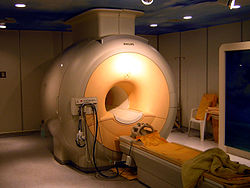
The study of the human body, albeit from different directions and for different purposes, is an important common link between medicine and some engineering disciplines. Medicine aims to sustain, repair, enhance and even replace functions of the human body, if necessary, through the use of technology.
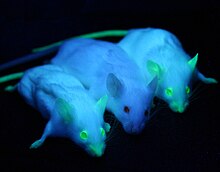
Modern medicine can replace several of the body's functions through the use of artificial organs and can significantly alter the function of the human body through artificial devices such as, for example, brain implants and pacemakers.[93][94] The fields of bionics and medical bionics are dedicated to the study of synthetic implants pertaining to natural systems.
Conversely, some engineering disciplines view the human body as a biological machine worth studying and are dedicated to emulating many of its functions by replacing biology with technology. This has led to fields such as artificial intelligence, neural networks, fuzzy logic, and robotics. There are also substantial interdisciplinary interactions between engineering and medicine.[95][96]
Both fields provide solutions to real world problems. This often requires moving forward before phenomena are completely understood in a more rigorous scientific sense and therefore experimentation and empirical knowledge is an integral part of both.
Medicine, in part, studies the function of the human body. The human body, as a biological machine, has many functions that can be modeled using engineering methods.[97]
The heart for example functions much like a pump,[98] the skeleton is like a linked structure with levers,[99] the brain produces electrical signals etc.[100] These similarities as well as the increasing importance and application of engineering principles in medicine, led to the development of the field of biomedical engineering that uses concepts developed in both disciplines.
Newly emerging branches of science, such as systems biology, are adapting analytical tools traditionally used for engineering, such as systems modeling and computational analysis, to the description of biological systems.[97]
Art
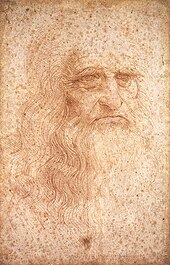
There are connections between engineering and art, for example, architecture, landscape architecture and industrial design (even to the extent that these disciplines may sometimes be included in a university's Faculty of Engineering).[102][103][104]
The Art Institute of Chicago, for instance, held an exhibition about the art of NASA's aerospace design.[105] Robert Maillart's bridge design is perceived by some to have been deliberately artistic.[106] At the University of South Florida, an engineering professor, through a grant with the National Science Foundation, has developed a course that connects art and engineering.[102][107]
Among famous historical figures, Leonardo da Vinci is a well-known Renaissance artist and engineer, and a prime example of the nexus between art and engineering.[101][108]
Business
Business Engineering deals with the relationship between professional engineering, IT systems, business administration and change management. Engineering management or "Management engineering" is a specialized field of management concerned with engineering practice or the engineering industry sector. The demand for management-focused engineers (or from the opposite perspective, managers with an understanding of engineering), has resulted in the development of specialized engineering management degrees that develop the knowledge and skills needed for these roles. During an engineering management course, students will develop industrial engineering skills, knowledge, and expertise, alongside knowledge of business administration, management techniques, and strategic thinking. Engineers specializing in change management must have in-depth knowledge of the application of industrial and organizational psychology principles and methods. Professional engineers often train as certified management consultants in the very specialized field of management consulting applied to engineering practice or the engineering sector. This work often deals with large scale complex business transformation or Business process management initiatives in aerospace and defence, automotive, oil and gas, machinery, pharmaceutical, food and beverage, electrical & electronics, power distribution & generation, utilities and transportation systems. This combination of technical engineering practice, management consulting practice, industry sector knowledge, and change management expertise enables professional engineers who are also qualified as management consultants to lead major business transformation initiatives. These initiatives are typically sponsored by C-level executives.
Other fields
In political science, the term engineering has been borrowed for the study of the subjects of social engineering and political engineering, which deal with forming political and social structures using engineering methodology coupled with political science principles. Financial engineering has similarly borrowed the term.
See also
- Lists
- Engineering society
- List of aerospace engineering topics
- List of basic chemical engineering topics
- List of electrical engineering topics
- List of engineering topics
- List of engineers
- List of genetic engineering topics
- List of mechanical engineering topics
- List of nanoengineering topics
- List of software engineering topics
- Glossaries
- Related subjects
- Controversies over the term Engineer
- Design
- Earthquake engineering
- Engineer
- Engineering economics
- Engineering education
- Engineering education research
- Engineers Without Borders
- Forensic engineering
- Global Engineering Education
- Industrial design
- Infrastructure
- Mathematics
- Open-source hardware
- Planned obsolescence
- Reverse engineering
- Science
- Structural failure
- Sustainable engineering
- Technology
- Women in engineering
References
- ^ definition of "engineering" from the https://dictionary.cambridge.org/dictionary/english/ Cambridge Academic Content Dictionary © Cambridge University
- ^ "About IAENG". iaeng.org. International Association of Engineers. Retrieved December 17, 2016.
- ^ [1]
- ^ Engineers' Council for Professional Development. (1947). Canons of ethics for engineers
- ^ a b c d e f g [2] (Includes Britannica article on Engineering)
- ^ "engineer". Oxford English Dictionary (3rd ed.). Oxford University Press. September 2005. (Subscription or UK public library membership required.)
- ^ Origin: 1250–1300; ME engin < AF, OF < L ingenium nature, innate quality, esp. mental power, hence a clever invention, equiv. to in- + -genium, equiv. to gen- begetting; Source: Random House Unabridged Dictionary, Random House, Inc. 2006.
- ^ Moorey, Peter Roger Stuart (1999). Ancient Mesopotamian Materials and Industries: The Archaeological Evidence. Eisenbrauns. ISBN 9781575060422.
- ^ D.T. Potts (2012). A Companion to the Archaeology of the Ancient Near East. p. 285.
- ^ a b Paipetis, S. A.; Ceccarelli, Marco (2010). The Genius of Archimedes – 23 Centuries of Influence on Mathematics, Science and Engineering: Proceedings of an International Conference held at Syracuse, Italy, June 8–10, 2010. Springer Science & Business Media. p. 416. ISBN 9789048190911.
- ^ Clarke, Somers; Engelbach, Reginald (1990). Ancient Egyptian Construction and Architecture. Courier Corporation. pp. 86–90. ISBN 9780486264851.
- ^ Faiella, Graham (2006). The Technology of Mesopotamia. The Rosen Publishing Group. p. 27. ISBN 9781404205604.
- ^ Moorey, Peter Roger Stuart (1999). Ancient Mesopotamian Materials and Industries: The Archaeological Evidence. Eisenbrauns. p. 4. ISBN 9781575060422.
- ^ Arnold, Dieter (1991). Building in Egypt: Pharaonic Stone Masonry. Oxford University Press. p. 71. ISBN 9780195113747.
- ^ Woods, Michael; Mary B. Woods (2000). Ancient Machines: From Wedges to Waterwheels. USA: Twenty-First Century Books. p. 58. ISBN 0-8225-2994-7.
- ^ Moorey, Peter Roger Stuart (1999). Ancient Mesopotamian Materials and Industries: The Archaeological Evidence. Eisenbrauns. p. 4. ISBN 9781575060422.
- ^ Wood, Michael (2000). Ancient Machines: From Grunts to Graffiti. Minneapolis, MN: Runestone Press. pp. 35, 36. ISBN 0-8225-2996-3.
- ^ Kemp, Barry J. (May 7, 2007). Ancient Egypt: Anatomy of a Civilisation. Routledge. p. 159. ISBN 9781134563883.
- ^ Selin, Helaine (2013). Encyclopaedia of the History of Science, Technology, and Medicine in Non-Westen Cultures. Springer Science & Business Media. p. 282. ISBN 9789401714167.
- ^ "The Antikythera Mechanism Research Project Archived 2008-04-28 at the Wayback Machine", The Antikythera Mechanism Research Project. Retrieved July 1, 2007 Quote: "The Antikythera Mechanism is now understood to be dedicated to astronomical phenomena and operates as a complex mechanical "computer" which tracks the cycles of the Solar System."
- ^ Wilford, John (July 31, 2008). "Discovering How Greeks Computed in 100 B.C." The New York Times.
- ^ Wright, M T. (2005). "Epicyclic Gearing and the Antikythera Mechanism, part 2". Antiquarian Horology. 29 (1 (September 2005)): 54–60.
- ^ Britannica on Greek civilization in the 5th century - Military technology Quote: "The 7th century, by contrast, had witnessed rapid innovations, such as the introduction of the hoplite and the trireme, which still were the basic instruments of war in the 5th." and "But it was the development of artillery that opened an epoch, and this invention did not predate the 4th century. It was first heard of in the context of Sicilian warfare against Carthage in the time of Dionysius I of Syracuse."
- ^ Ahmad Y Hassan, Donald Routledge Hill (1986). Islamic Technology: An illustrated history, p. 54. Cambridge University Press. ISBN 0-521-42239-6.
- ^ Lucas, Adam (2006), Wind, Water, Work: Ancient and Medieval Milling Technology, Brill Publishers, p. 65, ISBN 90-04-14649-0
- ^ Eldridge, Frank (1980). Wind Machines (2nd ed.). New York: Litton Educational Publishing, Inc. p. 15. ISBN 0-442-26134-9.
- ^ Shepherd, William (2011). Electricity Generation Using Wind Power (1 ed.). Singapore: World Scientific Publishing Co. Pte. Ltd. p. 4. ISBN 978-981-4304-13-9.
- ^ Taqi al-Din and the First Steam Turbine, 1551 A.D. Archived February 18, 2008, at the Wayback Machine, web page, accessed on line October 23, 2009; this web page refers to Ahmad Y Hassan (1976), Taqi al-Din and Arabic Mechanical Engineering, pp. 34–5, Institute for the History of Arabic Science, University of Aleppo.
- ^ Ahmad Y. Hassan (1976), Taqi al-Din and Arabic Mechanical Engineering, p. 34-35, Institute for the History of Arabic Science, University of Aleppo
- ^ Lakwete, Angela (2003). Inventing the Cotton Gin: Machine and Myth in Antebellum America. Baltimore: The Johns Hopkins University Press. pp. 1–6. ISBN 9780801873942.
- ^ Pacey, Arnold (1991) [1990]. Technology in World Civilization: A Thousand-Year History (First MIT Press paperback ed.). Cambridge MA: The MIT Press. pp. 23–24.
- ^ Žmolek, Michael Andrew (2013). Rethinking the Industrial Revolution: Five Centuries of Transition from Agrarian to Industrial Capitalism in England. BRILL. p. 328. ISBN 9789004251793.
The spinning jenny was basically an adaptation of its precursor the spinning wheel
- ^ Banu Musa (authors), Donald Routledge Hill (translator) (1979), The book of ingenious devices (Kitāb al-ḥiyal), Springer, pp. 23–4, ISBN 90-277-0833-9
- ^ Sally Ganchy, Sarah Gancher (2009), Islam and Science, Medicine, and Technology, The Rosen Publishing Group, p. 41, ISBN 978-1-4358-5066-8
- ^ Georges Ifrah (2001). The Universal History of Computing: From the Abacus to the Quatum Computer, p. 171, Trans. E.F. Harding, John Wiley & Sons, Inc. (See [3])
- ^ Hill, Donald (1998). Studies in Medieval Islamic Technology: From Philo to Al-Jazarī, from Alexandria to Diyār Bakr. Ashgate. pp. 231–232. ISBN 978-0-86078-606-1.
- ^ Koetsier, Teun (2001), "On the prehistory of programmable machines: musical automata, looms, calculators", Mechanism and Machine Theory, Elsevier, 36 (5): 589–603, doi:10.1016/S0094-114X(01)00005-2.
- ^ Kapur, Ajay; Carnegie, Dale; Murphy, Jim; Long, Jason (2017). "Loudspeakers Optional: A history of non-loudspeaker-based electroacoustic music" (PDF). Organised Sound. Cambridge University Press. 22 (2): 195–205. doi:10.1017/S1355771817000103. ISSN 1355-7718.
- ^ Professor Noel Sharkey, A 13th Century Programmable Robot (Archive), University of Sheffield.
- ^ "Episode 11: Ancient Robots", Ancient Discoveries, History Channel, retrieved September 6, 2008
- ^ Howard R. Turner (1997), Science in Medieval Islam: An Illustrated Introduction, p. 184, University of Texas Press, ISBN 0-292-78149-0
- ^ Donald Routledge Hill, "Mechanical Engineering in the Medieval Near East", Scientific American, May 1991, pp. 64–9 (cf. Donald Routledge Hill, Mechanical Engineering)
- ^ a b c d Musson; Robinso (1969). Science and Technology in the Industrial Revolution. University of Toronto Press.
- ^ Taylor, George Rogers (1969). The Transportation Revolution, 1815–1860. ISBN 978-0873321013.
- ^ a b Rosen, William (2012). The Most Powerful Idea in the World: A Story of Steam, Industry and Invention. University of Chicago Press. ISBN 978-0226726342.
- ^ Jenkins, Rhys (1936). Links in the History of Engineering and Technology from Tudor Times. Ayer Publishing. p. 66. ISBN 978-0-8369-2167-0.
- ^ Tylecote, R.F. (1992). A History of Metallurgy, Second Edition. London: Maney Publishing, for the Institute of Materials. ISBN 978-0901462886.
- ^ Hunter, Louis C. (1985). A History of Industrial Power in the United States, 1730–1930, Vol. 2: Steam Power. Charolttesville: University Press of Virginia.CS1 maint: ref=harv (link)
- ^ Roe, Joseph Wickham (1916), English and American Tool Builders, New Haven, Connecticut: Yale University Press, LCCN 16011753
- ^ Hounshell, David A. (1984), From the American System to Mass Production, 1800–1932: The Development of Manufacturing Technology in the United States, Baltimore, Maryland: Johns Hopkins University Press, ISBN 978-0-8018-2975-8, LCCN 83016269, OCLC 1104810110
- ^ Cowan, Ruth Schwartz (1997), A Social History of American Technology, New York: Oxford University Press, p. 138, ISBN 978-0-19-504605-2
- ^ Hunter, Louis C. (1985). A History of Industrial Power in the United States, 1730–1930, Vol. 2: Steam Power. Charlottesville: University Press of Virginia.CS1 maint: ref=harv (link)
- ^ Williams, Trevor I. (1982). A Short History of Twentieth Century Technology. US: Oxford University Press. p. 3. ISBN 978-0198581598.
- ^ Van Every, Kermit E. (1986). "Aeronautical engineering". Encyclopedia Americana. 1. Grolier Incorporated. p. 226.
- ^ Wheeler, Lynde, Phelps (1951). Josiah Willard Gibbs – the History of a Great Mind. Ox Bow Press. ISBN 978-1-881987-11-6.
- ^ Journal of the British Nuclear Energy Society: Volume 1 British Nuclear Energy Society – 1962 – Snippet view Quote: In most universities it should be possible to cover the main branches of engineering, i.e. civil, mechanical, electrical and chemical engineering in this way. More specialized fields of engineering application, of which nuclear power is ...
- ^ The Engineering Profession by Sir James Hamilton, UK Engineering Council Quote: "The Civilingenior degree encompasses the main branches of engineering civil, mechanical, electrical, chemical." (From the Internet Archive)
- ^ Indu Ramchandani (2000). Student's Britannica India,7vol.Set. Popular Prakashan. p. 146. ISBN 978-0-85229-761-2. Retrieved March 23, 2013.
BRANCHES There are traditionally four primary engineering disciplines: civil, mechanical, electrical and chemical.
- ^ "History and Heritage of Civil Engineering". ASCE. Archived from the original on February 16, 2007. Retrieved August 8, 2007.
- ^ "What is Civil Engineering". Institution of Civil Engineers. Retrieved May 15, 2017.
- ^ Watson, J. Garth. "Civil Engineering". Encyclopaedia Britannica.
- ^ Bronzino JD, ed., The Biomedical Engineering Handbook, CRC Press, 2006, ISBN 0-8493-2121-2
- ^ Bensaude-Vincent, Bernadette (March 2001). "The construction of a discipline: Materials science in the United States". Historical Studies in the Physical and Biological Sciences. 31 (2): 223–48. doi:10.1525/hsps.2001.31.2.223.
- ^ "Archived copy" (PDF). Archived from the original (PDF) on September 29, 2011. Retrieved August 2, 2011.CS1 maint: archived copy as title (link)
- ^ Nature, Jim Lucas 2014-08-22T00:44:14Z Human. "What is Engineering? | Types of Engineering". livescience.com. Retrieved September 15, 2019.
- ^ "Theories About Engineering – Genrich Altshuller". theoriesaboutengineering.org. Retrieved September 15, 2019.
- ^ "Comparing the Engineering Design Process and the Scientific Method". Science Buddies. Retrieved September 15, 2019.
- ^ "Forensic Engineering | ASCE". www.asce.org. Retrieved September 15, 2019.
- ^ Arbe, Katrina (May 7, 2001). "PDM: Not Just for the Big Boys Anymore". ThomasNet. Archived from the original on August 6, 2010. Retrieved December 30, 2006.
- ^ Arbe, Katrina (May 22, 2003). "The Latest Chapter in CAD Software Evaluation". ThomasNet. Archived from the original on August 6, 2010. Retrieved December 30, 2006.
- ^ Jowitt, Paul W. (2006). "Engineering Civilisation from the Shadows" (PDF). Archived from the original (PDF) on October 6, 2006.
- ^ Home page for EMI Archived April 14, 2012, at the Wayback Machine
- ^ "engineeringuk.com/About_us". Archived from the original on May 30, 2014.
- ^ "Archived copy". Archived from the original on June 19, 2014. Retrieved June 19, 2014.CS1 maint: archived copy as title (link)
- ^ "Archived copy". Archived from the original on October 6, 2014. Retrieved June 19, 2014.CS1 maint: archived copy as title (link)
- ^ Code of Ethics, National Society of Professional Engineers
- ^ Origin of the Iron Ring concept
- ^ Rosakis, Ares Chair, Division of Engineering and Applied Science. "Chair's Message, Caltech". Archived from the original on November 4, 2011. Retrieved October 15, 2011.
- ^ Ryschkewitsch, M.G. NASA Chief Engineer. "Improving the capability to Engineer Complex Systems – Broadening the Conversation on the Art and Science of Systems Engineering" (PDF). p. 8 of 21. Retrieved October 15, 2011.
- ^ American Society for Engineering Education (1970). Engineering education. 60. American Society for Engineering Education. p. 467.
The great engineer Theodore von Karman once said, "Scientists study the world as it is, engineers create the world that never has been." Today, more than ever, the engineer must create a world that never has been ...
- ^ Vincenti, Walter G. (1993). What Engineers Know and How They Know It: Analytical Studies from Aeronautical History. Johns Hopkins University Press. ISBN 978-0-8018-3974-0.
- ^ Walter G Whitman; August Paul Peck. Whitman-Peck Physics. American Book Company, 1946, p. 06. OCLC 3247002
- ^ Ateneo de Manila University Press. Philippine Studies, vol. 11, no. 4, 1963. p. 600
- ^ "Relationship between physics and electrical engineering". Journal of the A.I.E.E. 46 (2): 107–108. 1927. doi:10.1109/JAIEE.1927.6534988.
- ^ Puttaswamaiah. Future Of Economic Science. Oxford and IBH Publishing, 2008, p. 208.
- ^ Yoseph Bar-Cohen, Cynthia L. Breazeal. Biologically Inspired Intelligent Robots. SPIE Press, 2003. ISBN 9780819448729. p. 190
- ^ C. Morón, E. Tremps, A. García, J.A. Somolinos (2011) The Physics and its Relation with the Engineering, INTED2011 Proceedings pp. 5929–34. ISBN 978-84-614-7423-3
- ^ R Gazzinelli, R L Moreira, W N Rodrigues. Physics and Industrial Development: Bridging the Gap. World Scientific, 1997, p. 110.
- ^ Steve Fuller. Knowledge Management Foundations. Routledge, 2012. ISBN 9781136389825. p. 92
- ^ "Industrial Physicists: Primarily specialising in Engineering" (PDF). American Institute for Physics. October 2016.
- ^ Classical and Computational Solid Mechanics, YC Fung and P. Tong. World Scientific. 2001.
- ^ "Code of Ethics | National Society of Professional Engineers". www.nspe.org. Retrieved September 10, 2019.
- ^ Ethical Assessment of Implantable Brain Chips. Ellen M. McGee and G.Q. Maguire, Jr. from Boston University
- ^ IEEE technical paper: Foreign parts (electronic body implants).by Evans-Pughe, C. quote from summary: Feeling threatened by cyborgs?
- ^ Institute of Medicine and Engineering: Mission statement The mission of the Institute for Medicine and Engineering (IME) is to stimulate fundamental research at the interface between biomedicine and engineering/physical/computational sciences leading to innovative applications in biomedical research and clinical practice. Archived March 17, 2007, at the Wayback Machine
- ^ IEEE Engineering in Medicine and Biology: Both general and technical articles on current technologies and methods used in biomedical and clinical engineering ...
- ^ a b Royal Academy of Engineering and Academy of Medical Sciences: Systems Biology: a vision for engineering and medicine in pdf: quote1: Systems Biology is an emerging methodology that has yet to be defined quote2: It applies the concepts of systems engineering to the study of complex biological systems through iteration between computational or mathematical modelling and experimentation. Archived April 10, 2007, at the Wayback Machine
- ^ Science Museum of Minnesota: Online Lesson 5a; The heart as a pump
- ^ Minnesota State University emuseum: Bones act as levers Archived December 20, 2008, at the Wayback Machine
- ^ UC Berkeley News: UC researchers create model of brain's electrical storm during a seizure
- ^ a b Bjerklie, David. "The Art of Renaissance Engineering." MIT's Technology Review Jan./Feb.1998: 54–59. Article explores the concept of the "artist-engineer", an individual who used his artistic talent in engineering. Quote from article: Da Vinci reached the pinnacle of "artist-engineer"-dom, Quote2: "It was Leonardo da Vinci who initiated the most ambitious expansion in the role of artist-engineer, progressing from astute observer to inventor to theoretician." (Bjerklie 58)
- ^ a b National Science Foundation:The Art of Engineering: Professor uses the fine arts to broaden students' engineering perspectives
- ^ MIT World:The Art of Engineering: Inventor James Dyson on the Art of Engineering: quote: A member of the British Design Council, James Dyson has been designing products since graduating from the Royal College of Art in 1970. Archived July 5, 2006, at the Wayback Machine
- ^ University of Texas at Dallas: The Institute for Interactive Arts and Engineering
- ^ "Aerospace Design: The Art of Engineering from NASA's Aeronautical Research". Archived from the original on August 15, 2003. Retrieved March 31, 2007.
- ^ Princeton U: Robert Maillart's Bridges: The Art of Engineering: quote: no doubt that Maillart was fully conscious of the aesthetic implications ...
- ^ quote:..the tools of artists and the perspective of engineers.. Archived September 27, 2007, at the Wayback Machine
- ^ Drew U: user website: cites Bjerklie paper Archived April 19, 2007, at the Wayback Machine
Further reading
- Blockley, David (2012). Engineering: a very short introduction. New York: Oxford University Press. ISBN 978-0-19-957869-6.
- Dorf, Richard, ed. (2005). The Engineering Handbook (2 ed.). Boca Raton: CRC. ISBN 978-0-8493-1586-2.
- Billington, David P. (June 5, 1996). The Innovators: The Engineering Pioneers Who Made America Modern. Wiley; New Ed edition. ISBN 978-0-471-14026-9.
- Madhavan, Guru (2015). Applied Minds: How Engineers Think. W.W. Norton.
- Petroski, Henry (March 31, 1992). To Engineer is Human: The Role of Failure in Successful Design. Vintage. ISBN 978-0-679-73416-1.
- Lord, Charles R. (August 15, 2000). Guide to Information Sources in Engineering. Libraries Unlimited. doi:10.1336/1563086999. ISBN 978-1-56308-699-1.
- Vincenti, Walter G. (February 1, 1993). What Engineers Know and How They Know It: Analytical Studies from Aeronautical History. The Johns Hopkins University Press. ISBN 978-0-8018-4588-8.
External links
 The dictionary definition of engineering at Wiktionary
The dictionary definition of engineering at Wiktionary Learning materials related to Engineering at Wikiversity
Learning materials related to Engineering at Wikiversity Quotations related to Engineering at Wikiquote
Quotations related to Engineering at Wikiquote

